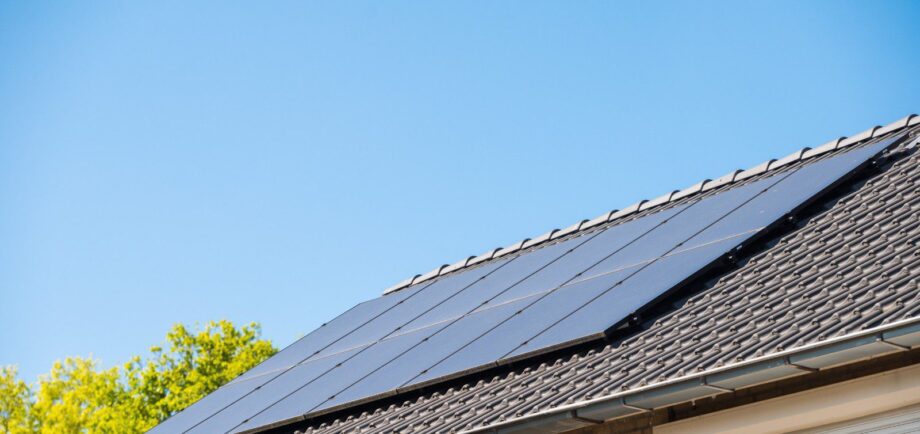In times of sky-high energy prices, consumers with solar panels on their roofs seem to be the real winners. Thanks to the favourable net-metering scheme, you subtract the electricity you generate from the electricity you consume. The government plans to phase out this scheme in the coming years. This will make consumers increasingly dependent on the feed-in compensation from their energy company. But is this already well regulated?
What is netting?
When you generate more power with your solar panels than you consume yourself at that time, you supply that power to the grid. Suppose you have solar panels and generate 4000 kWh (kilowatt hours) of electricity in a year, most of it in summer. You use an average of 250 kWh of electricity per month, which is 3000 kWh annually. Then that 3000 kWh on your energy bill is offset against 3000 kWh you have generated yourself. This is called net metering. This way, even in the dark winter months, you benefit from the power generated by your solar panels.
Feed-in compensation
In this example, we generated a net 1000 kWh more than we consumed. For this, your energy company gives a tariff. This is called the feed-in tariff. The government plans to gradually phase out net-metering. In 2025, you will still be allowed to net 67% of your energy bill, but this will gradually decrease until in 2031 you are no longer allowed to net anything at all. You will then be completely dependent on the feed-in tariff.
| Calendar year | To be netted |
| 2022 | 100 percent |
| 2023 | 100 percent |
| 2024 | 100 percent |
| 2025 | 64 percent |
| 2026 | 64 percent |
| 2027 | 55 percent |
| 2028 | 46 percent |
| 2029 | 37 percent |
| 2030 | 28 percent |
| 2031 | 0 percent |
What is reasonable?
This should be a ‘reasonable feed-in compensation’. But what is reasonable? Until 2014, this was neatly regulated: a minimum of 70% of the bare delivery tariff was a reasonable fee. Currently, there is no set minimum fee. Minister Jetten (EZK) says he intends to set the legal minimum at 80 per cent of the bare delivery tariff. This is to be set in the new Energy Act.
Feed-in compensation lags behind
Although energy prices have risen dramatically in recent months, this is not the case with feed-in compensation. Energy company Eneco, for instance, received a bucket of criticism in August when it announced it was raising the feed-in compensation to 9 cents. In recent years, Eneco’s feed-in compensation was linked to the tariff customers paid themselves. After criticism from the Consumers’ Association and others, the 9-cent feed-in compensation only applies to households with a variable contact.
Eneco’s response
In a response to Radar, an Eneco spokesperson said the feed-in compensation is based on the value of the energy delivered back to the market.
Essent and Vattenfall
Of the three major energy companies, Essent has the lowest feed-in compensation. 5.5 cents per kWh is nowhere near the 80 per cent that Minister Jetten (EZK) wants to achieve. Vattenfall has recently increased their feed-in compensation: since September 2022, it is 16.8 cents per kWh.
Monthly netting
For most households with solar panels, it will only really matter from 2025 onwards what their feed-in compensation is. After all, until then they can net up annually. Budget Energie customers do not benefit from this favourable arrangement. The energy company (which also includes NLE) offers contracts where prices move with the market on a monthly basis. According to the energy company, this is the reason for monthly netting as well. ‘For a customer with variable tariffs, the tariffs change every month, which is why we balance these customers on a monthly basis,’ Budget Energie said.
Unfavourable arrangement
This is very unfavourable for households with solar panels. In the summer months, you get a low feed-in compensation and in winter you cannot benefit from power generated in summer. But is this allowed just like that? ‘It does not explicitly follow from the law over which period the balancing of the amount of electricity fed in and taken out must take place, but this is clear from the amendment through which the balancing scheme came into force in 2004,’ writes minister Jetten (EZK) in response to parliamentary questions by Henri Bontenbal (CDA). The minister has sent the House of Representatives a memorandum of amendment by which he wants to explicitly stipulate that energy companies have to net up annually.
ACM response to netting
The ACM also believes that energy suppliers should balance in the annual final bill, but that the rules on this are unclear. ‘Because the legislation does not now explicitly state that netting must be done annually, the word ‘annually’ will be added to the netting article in the Electricity Act. This means that netting over another period (e.g. per month) is not allowed. Because this change in legislation has not yet been implemented and the legislation therefore does not explicitly state that netting on a monthly basis is not allowed, the ACM cannot yet enforce this.’
Not enforcing compensation
But what does a change in the law mean for Budget Energie customers who have supplied power to the grid in recent months? Little, according to a response from the ACM. ‘Even if the legal text is amended, the ACM cannot enforce retroactive compensation. In general terms, the ACM does not have the power to impose financial compensation for consumers on a supplier. For that, consumers will have to go to court.’

